5 Classic Knife Cuts Every Cook Should Know
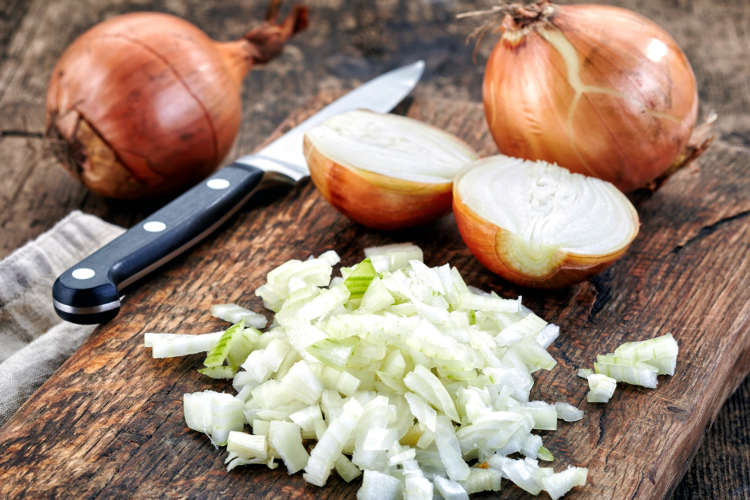
For both the home cook and the professional chef, mastering knife cuts can improve the aesthetics, flavor development, consistency and overall experience of a dish. Understanding a few basic knife skills can simplify the cooking process and bring a sense of joy and ease to your kitchen.
What are the basic knife cuts an aspiring cook should learn? Which knives are best for chopping, slicing or peeling? Here are five classic knife cuts every cook should know and some of the best knives for common kitchen tasks.
Jump to Section


5 Classic Knife Cuts
1. Dice Cut
A dice cut consists of a uniform cube that is even on all sides. This classic knife cut is made by squaring off the sides of the product and slicing it into even planks, then slicing it into long matchsticks before cutting the matchsticks into cubes.
A small dice traditionally measures 1/4" on all sides, a medium dice at 1/2" and a large dice at 3/4." This square cut is often used for fruits or vegetables such as potatoes, tomatoes or squash. This knife cut is also a popular choice for how to chop an onion.
Although a chef’s knife will do the job well, a santoku such as the Kikuichi Elite Warikomi Damascus Tsuchime 7" Santoku Knife is one of the best Japanese knives for dicing thanks to a hammered finish to help release food cleanly from the blade.
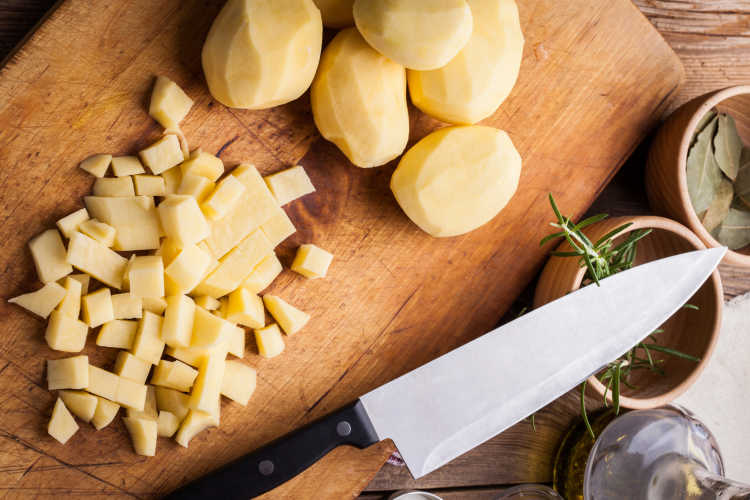
2. Julienne Cut
Sometimes called a matchstick or allumette cut, this knife cut creates long, slender pieces by thinly slicing the vegetable into planks then stacking a few planks and cutting them into thin strips.
You can achieve this knife cut with several types of kitchen knives, including a chef’s knife, santoku or utility knife. This technique is a popular choice for raw applications such as in a fresh slaw or salad and quick-cooking recipes like a stir fry. Learning how to julienne cut is foundational to perfecting other knife cuts such as a small dice and brunoise.
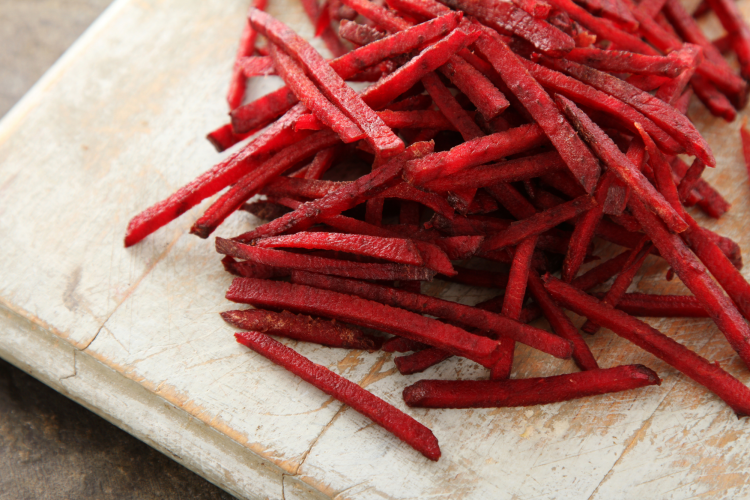
3. Mince Cut
The least precise of the basic knife cuts, a mince cut may be irregular as long as it results in fine pieces.
To learn how to mince, use a chef’s knife to roughly chop the ingredients using a slicing or chopping motion, then gather the pieces into a small pile. Holding the tip of the knife steady with your free hand, use a rocking motion to chop across the pile, occasionally re-gathering ingredients until the mince is as fine as you would like it to be.
This knife cut is typically used for ingredients that distribute flavor such as garlic, herbs or other aromatics.
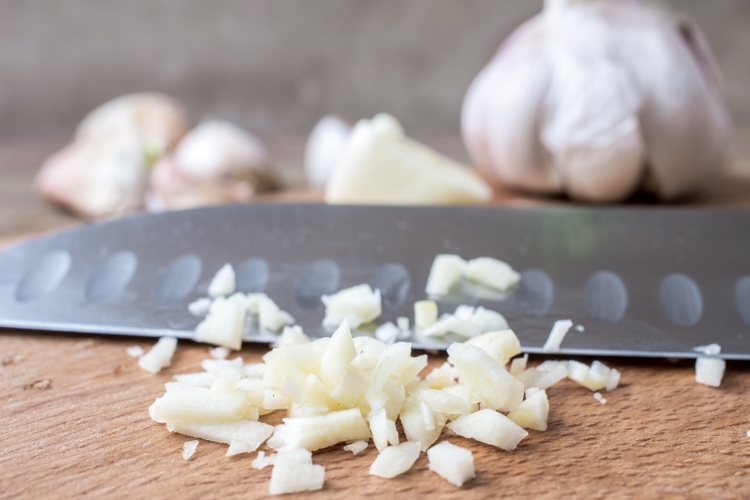
4. Batonnet Cut
Similar to the julienne cut in technique, a batonnet is a thick, squared rectangle usually measuring about 3" long and 1/4" thick. The goal of this knife cut is to create small, uniform sticks.
Start by squaring off the product, then cut crosswise into two pieces. Cut at each 1/4" lengthwise, stack the rectangles and cut lengthwise again at each 1/4." Batonnet cuts are often used for French fries or vegetables for crudité.
To create this traditional style of knife cut, a tool such as the Miyabi Evolution 6.5” Nakiri Knife offers both the strength to break down firm vegetables and the maneuverability to make precise cuts.
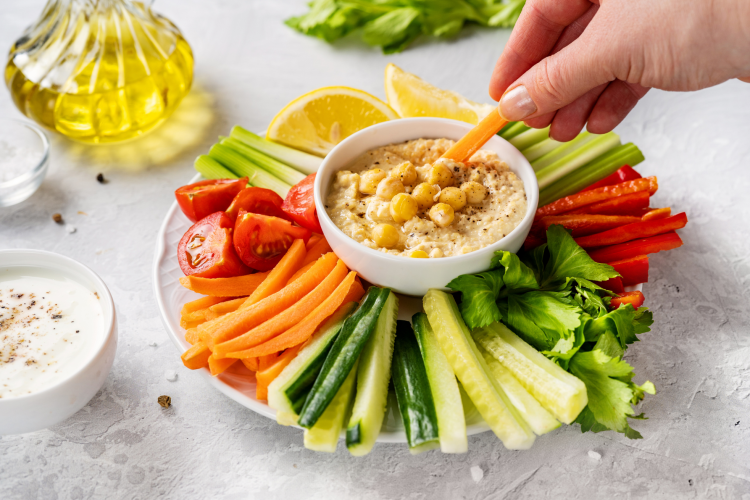
5. Brunoise Cut
This knife cut is a fancy way of describing a very, very small dice, similar to a mince, but more precise.
To make a brunoise cut, start by creating a julienne shape, then make a pile of the julienned pieces and cut them into very small cubes, typically 1/8" on each side. This technique is often reserved for garnishes as the pieces are generally too small to cook.
For a delicate brunoise, a utility knife such as the Kikuichi Nickel Warikomi Damascus 6” Petty Knife offers the agility of a paring knife with the heft of a chef’s knife to achieve fine, even cubes.
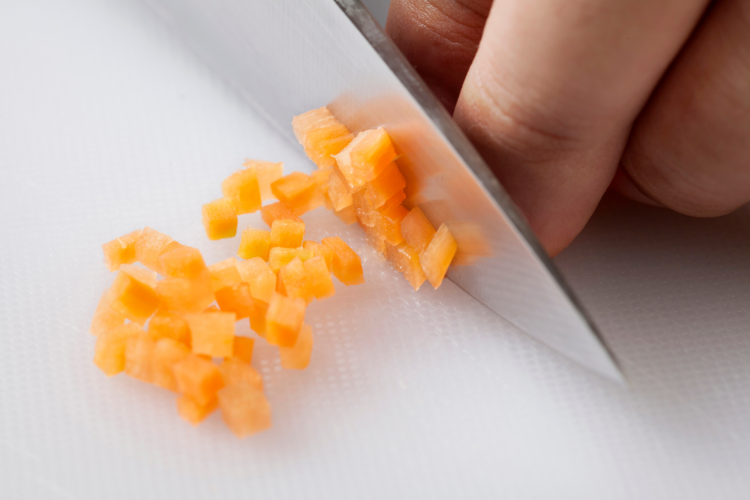
More Knife Uses
Peeling and Coring
In addition to knife cuts, some other basic tasks aspiring chefs will want to practice are peeling with a knife and coring fruits and vegetables. Efficiently removing the tough, unappetizing or inedible parts of a product requires dexterity and precision. For these tasks, a quality paring knife is essential.
A paring knife is similar to a chef’s knife, but it is smaller and easier to maneuver while handling kitchen tasks such as peeling, coring, trimming skin or fat, and creating small garnishes. The best paring knives make quick work of peeling apple skins, removing the eyes from potatoes, trimming the skin or fat on a chicken, or creating a fine garnish of herbs for your dish.
Paring knives are also a helpful tool for learning more advanced knife cuts and preparation techniques such as segmenting citrus or practicing the tourné.
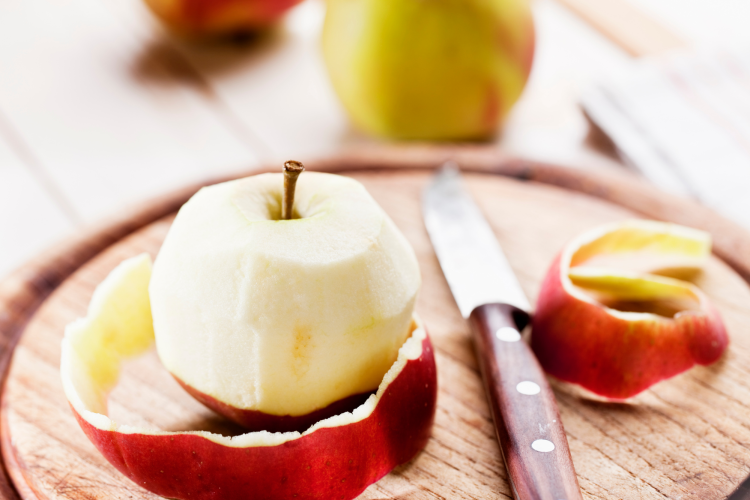
Heavy Chopping
Some kitchen jobs require a little extra heft such as chopping through a hearty butternut squash or breaking down a whole chicken. For these tasks, a cleaver or the lighter, nimbler nakiri knife is often the best choice for safer, cleaner and more efficient cuts.
Cleavers and nakiri knives can also be very effective for pounding, mincing, dicing and slicing making it a useful tool while preparing holiday meals or large family dinners. A strong and balanced cleaver such as the Zwilling Four Star 6” Meat Cleaver can handle cleanly breaking down sturdy products such as large cuts of meat, autumn squash, potatoes or pineapple with comfort and ease.
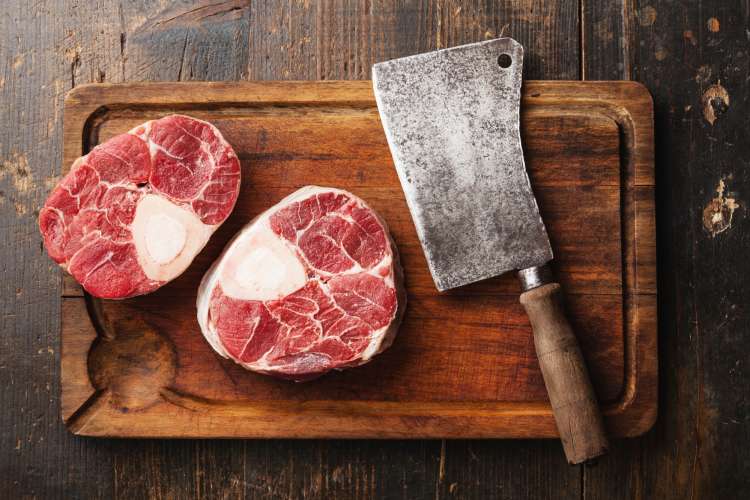
Learning these five basic knife cuts and how to choose the correct knife for the job will quickly have you on your way to becoming an impressive home cook. You do not need to perfect every cut or have an arsenal of knives and tools at your disposal to make beautiful and delicious food. With these foundational skills and a few quality knives, you can enhance both your cooking experience and the food you make.
For even more ways to elevate your kitchen, check out chef-recommended cutlery in the Cozymeal Shop.



FOOD FOR THOUGHT?
Join the conversation.